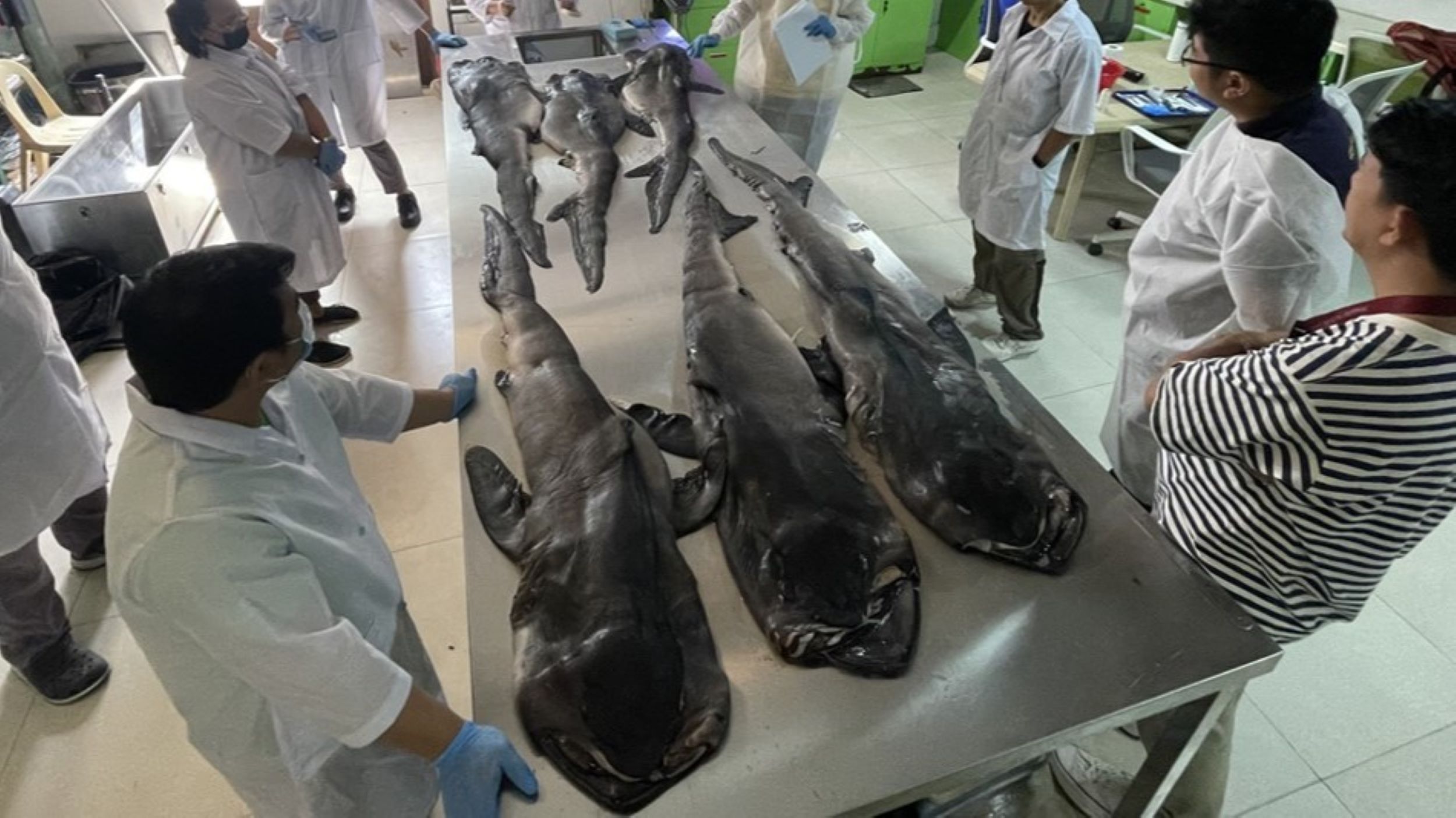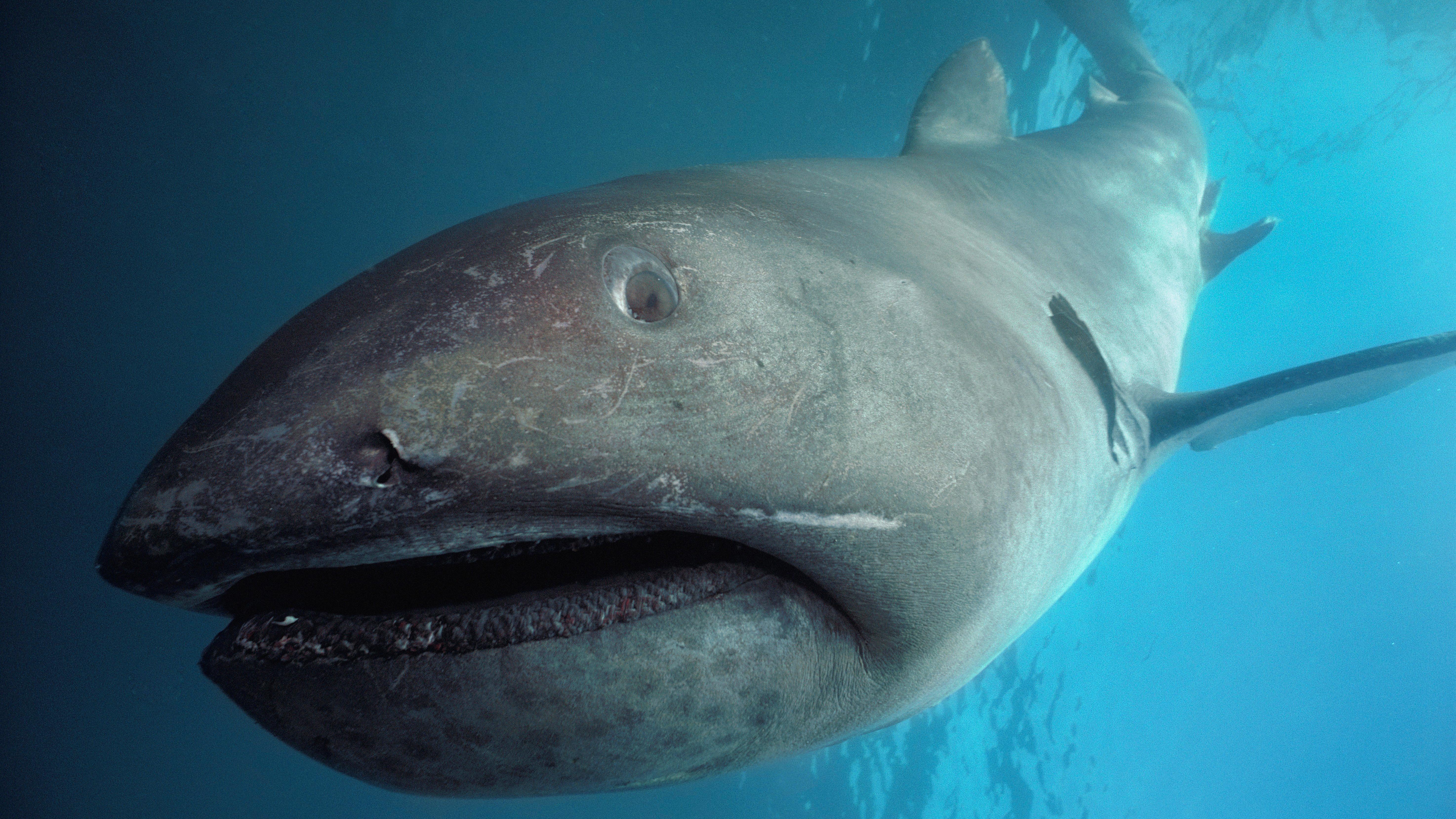
The first ever record of a pregnant megamouth shark has been documented after a dead female washed up on the shores of the Philippines.
The 18-foot-long (5.5 meters) megamouth shark (Megachasma pelagios), which was found on Nov. 14 in Barangay Ipil, Dipaculao, Aurora province, was pregnant with seven pups when she washed up. According to New Scientist, the mother showed no signs of injury from fishing gear and scientists believe the pups had been expelled from the mother's body on the shore.
Representatives from the National Museum of the Philippines, who announced the discovery in a Facebook post, said the mother's body was taken for a necropsy by the Philippines' Bureau of Fisheries and Aquatic Resources, along with one of the pups.
The other six juveniles were taken to the National Museum of the Philippines to be examined. After being studied, the creatures will be preserved and kept at the museum.
The discovery has confirmed that these sharks give birth to their offspring live, rather than laying eggs. Until now, researchers were unsure whether megamouth sharks were ovoviviparous — meaning that eggs develop within the mother's body and are birthed live.
Related: Watch 2 megamouth sharks caught on video for the 1st time ever
Megamouth sharks were only discovered by scientists in 1976, when one was accidentally caught after getting entangled in deep naval equipment near Hawaii.

This species has only been observed in the wild a few times, and fewer than 60 individuals have ever been recorded, according to the ocean conservation organization Oceana.
Megamouth sharks weigh up to 2,700 pounds (1,225 kilograms) and are named after their large, circular mouths. The mouth of a 16-foot (5 m) megamouth shark is around 4 feet (1.2 m) wide.
Megamouth sharks spend most of their lives in the dark, living as deep as 15,000 feet (4,600 m) below the surface and only coming up to shallower water at night.
They are filter feeders and swim with their mouths wide open to capture tiny marine crustaceans called krill. The mouths of megamouth sharks contain light-producing organs that help to attract their prey.
Researchers hope this latest discovery of an individual will help them learn more about the elusive species.







